
|   |

|   |
Kadamb's A Quartet takes off with two dramatic narratives - Dr. S D Desai e-mail: sureshmrudula@gmail.com September 23, 2022 Dance lovers have heard it said, Katha kahe so Kathak kahave. Kadamb Centre for Dance's A Quartet, conceptualized by its lead dancer Rupanshi Kashyap with each segment visualized under the artistic supervision of Kumudini Lakhia, as also scripted and directed by her, took off to a packed to capacity audience and more at Rhaen Basera near Karnavati on 17th September. 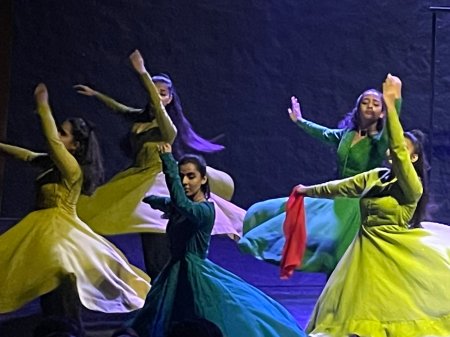 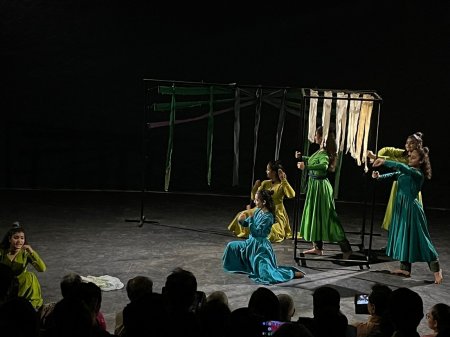 Aaj Rung Hai The inaugural dance piece was the popular Aaj Rung Hai, a revival, which has twin elements of a vocal narrative (Katha) and its visualization in the Kathak style with a bit of drama thrown in. An hour long, it becomes a modern version of Katha-k, engrossing for a viewer of any age both in its vocal and visualized details. With an anecdote as a curtain-raiser, Aaj Rung Hai interweaves humour, romance and an inspiring message - all of abiding universal interest. The platonic love tale involves a queen and her washerman, who dies on hearing that she has breathed her last. At an elevated level in the mainstream story, Amir Khusrau (Aarna Desai), a genius musician and man of letters, is known to have such passionate attachment to his guru Hazrat Nizamuddin Auliya (Vaishnavi). He died within a few months of his guru's death. 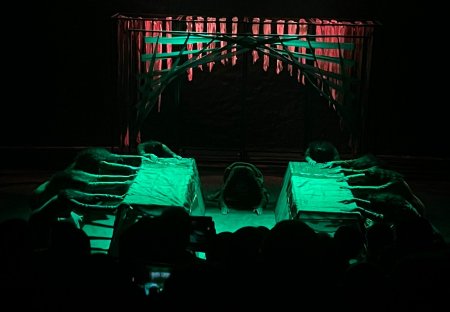 Aaj Rung Hai The story with an easy flow unfolds in two alternating streams. The Narrator (Vedika) has her charmingly playful vocal style. The other girls (Sunidhi, Parita, Sanvi, Yagnaja, Dhara, Divija, Diya) nonverbally portray characters, their interaction, incidents, emotions, objects, movement as of a procession, life, death, a ritual and celebration! With admirable economy, Mitali Dhruva has designed the sets. In an atmosphere of distrust all around us for anything 'other', the team significantly celebrates sentiments of a common man and lives and work of leaders of another religious faith. Without being aware of it, members of the team get exposed to the quality of tolerance themselves and expose the vociferously appreciative young audience to it. 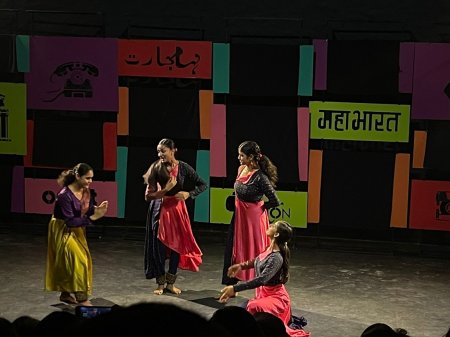 Land of Chaos Having taken off on Day One with a narrative in vocal and visual Kathak styles, the Kadamb team of young dancers (Nirzari, Vaishnavi, Sunidhi, Parita, Aarna, Yagnaja, Saanvi) led by their ebullient leader Rupanshi on Day Two (Sept 18) of A Quartet at Rhaen Basera went a step further and introduced a new dimension to the meaning of Katha-k. Precociously they entered the domain of collective social psychology in an engaging way! Land of Chaos, scripted and directed by Rupanshi, presents a conflict between acceptance and resistance, between the nostalgia of the time spent in an impressionable age and the distrust of the advent of a new time. To lilting rhythms and with mimetic action the budding dancers act out all too familiar lines from movies, television serials, ads, political rhetoric and what not. You have Mahabharat, Shaktimaan, Tu-Tu Mein-Mein, Paan-Paraag and the like to establish the '90s. One after another, respective posters on the back wall get uncovered for the already excited viewers who greet them with loud applause. The rapport is complete. Soon the transition is hinted at and a veritable clash of ideas gets developed through a smartly fashioned chain of fast moving breathtaking sequences. An individual is in turmoil. There must be others like her. Is it not wise to change with the changing time? 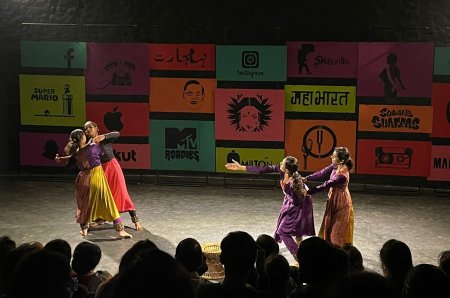 Land of Chaos It is a modest but admirable exploration of what goes on around and in the minds of individuals at a given time. Remarkably, it is all attempted without a spoken word - with the traditional elements of Kathak that enthrall with its rhythm. Two diverse strands of a narrative and an idea develop, the underlying tension is highlighted and its resolution suggested (Set design: Mitali Dhruva, Costumes: Ishira Kartikeya). There is certainly scope for complexity in the content, but the form remains engrossing all through. With characteristic modesty, Rupanshi expressed her gratitude on Day One to their revered and beloved guru Kumudini Lakhia, who could not attend, 'Hum aapke Amir Khusrau ban paayenge ki nahi vo pata nahi, magar aap hamare Nizamuddin Auliya zaroor hain!' With the budding dancers' intensity and confidence, the two novel dance dramas, where she scrupulously avoids mentioning the word 'choreography', become interesting and promising. 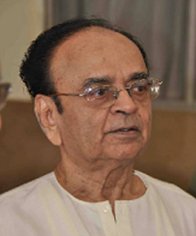 Dr. S.D. Desai, a professor of English, has been a Performing Arts Critic for many years. Among the dance journals he has contributed to are Narthaki, Sruti, Nartanam and Attendance. His books have been published by Gujarat Sahitya Academy, Oxford University Press and Rupa. After 30 years with a national English daily, he is now a freelance art writer. |